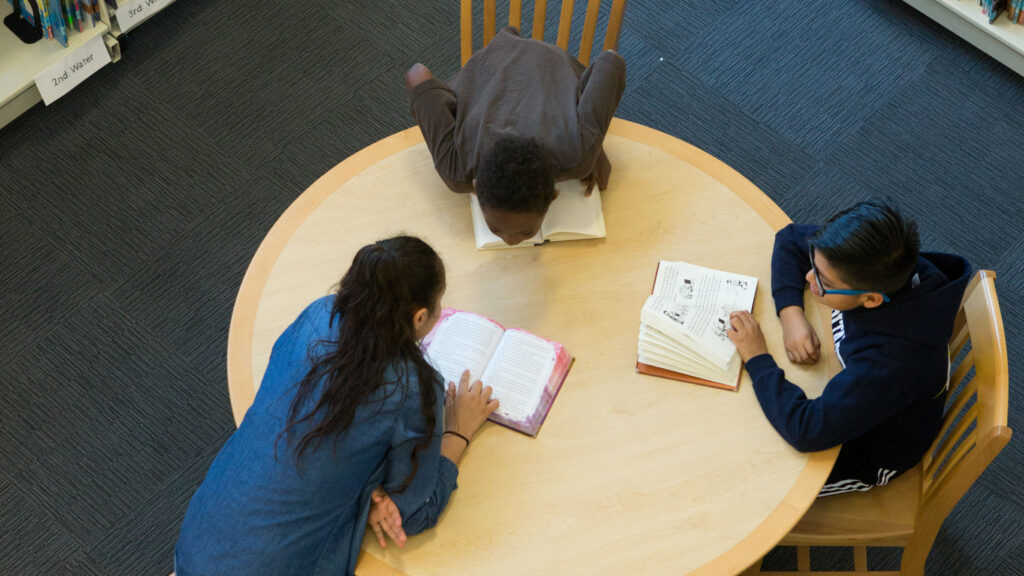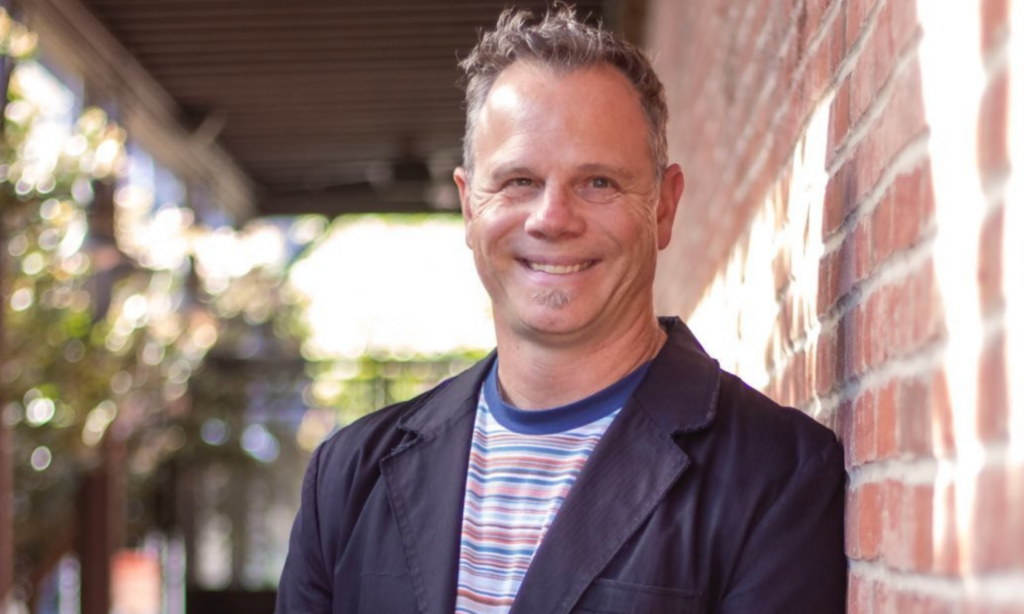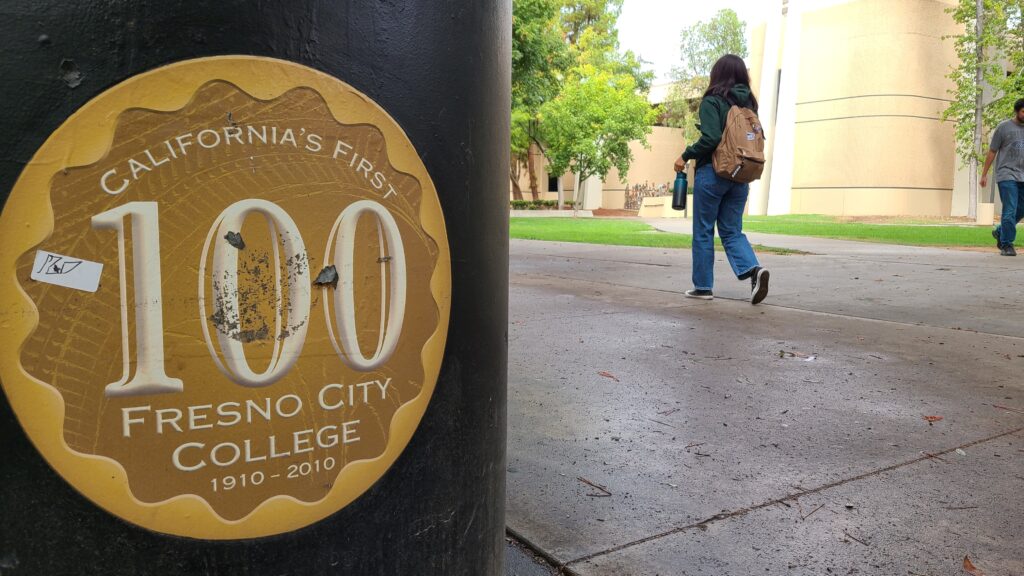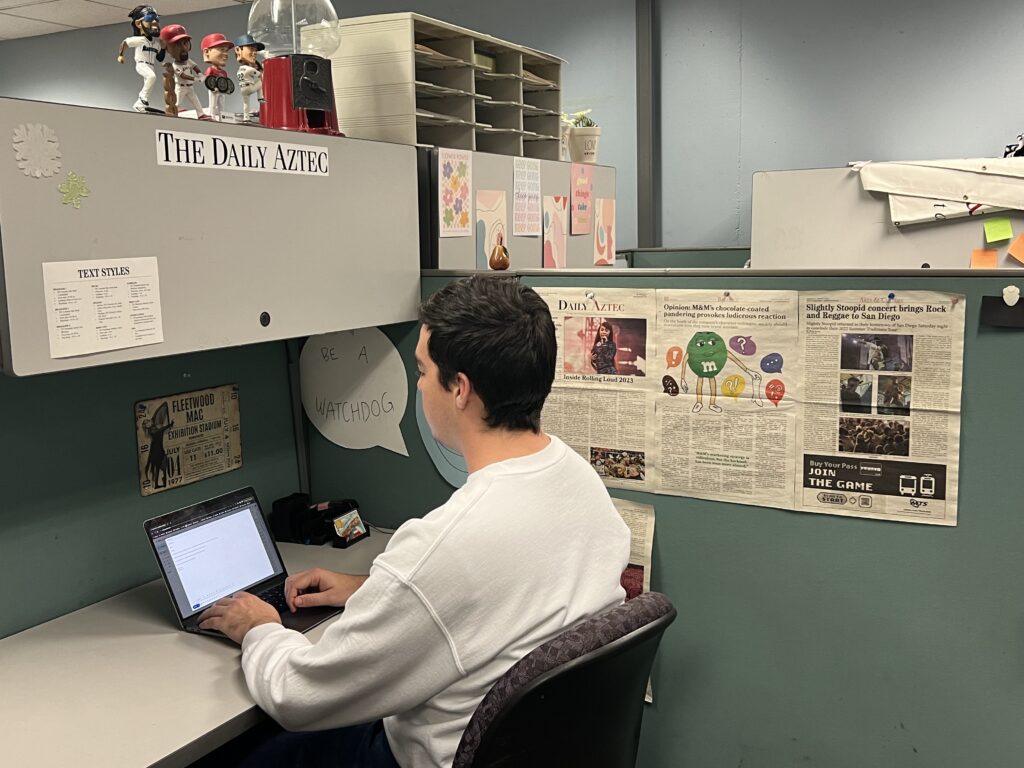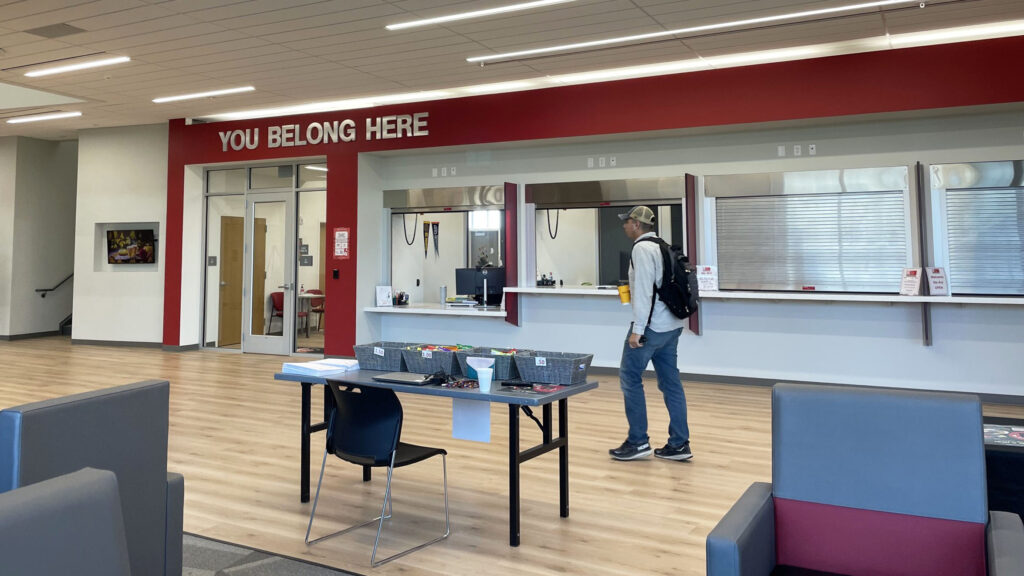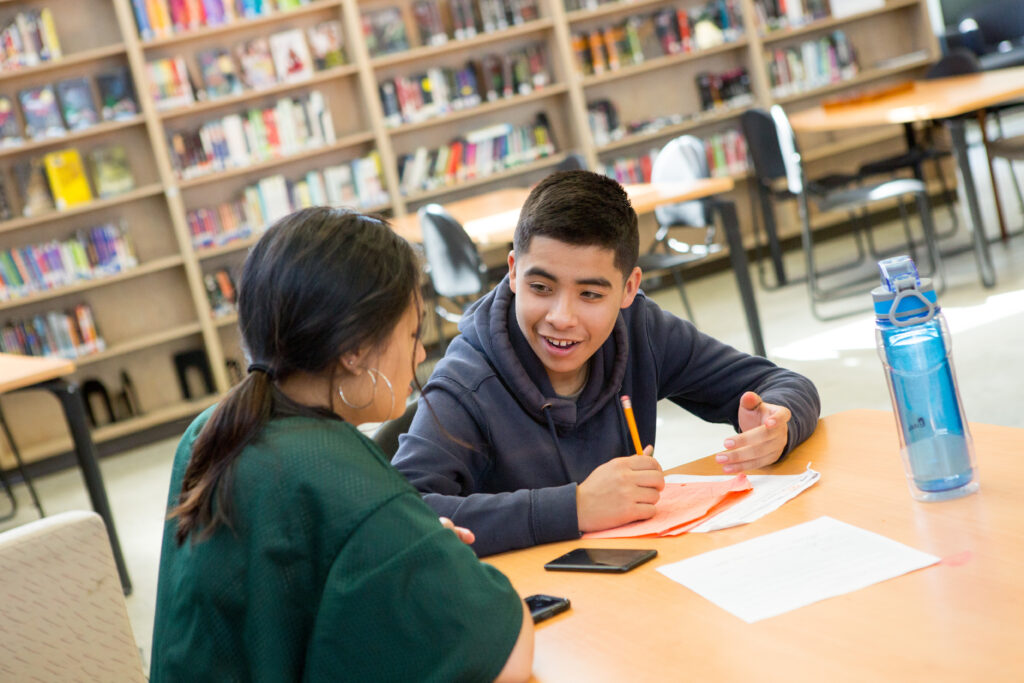
Credit: Allison Shelley / EDUimages
California enrolls a far lower percentage of English learners in bilingual education programs than other states, according to a report released in October from The Century Foundation.
The authors also found that California is investing less than other states in bilingual education. They recommend the state significantly expand investment in multilingual instruction, particularly dual-language immersion programs; prioritize enrollment in those programs for English learners; and invest more in recruiting and preparing bilingual teachers.
Prioritizing enrollment for English learners in bilingual and dual-language immersion programs is important, the authors stated, because research has shown these programs help English learners.
“New studies show every year that English learners, and especially young English learners, do best when they’re in some form of bilingual setting,” said Conor P. Williams, senior fellow at The Century Foundation and one of the authors of the report. “They do best at everything, they do best at maintaining their home language, of course, they do best at learning English over time, and they do best in academic subjects.”
The Century Foundation is a progressive public policy think tank based in New York City and Washington, D.C.
California has more English learners than any other state. About 40% of students in California schools are now or were once English learners; about half of them are learning English currently while the other half have now mastered the language.
Yet, only 16.4% of English learners in the state were enrolled in bilingual or dual-language immersion programs in 2019-20. That percentage is more than three times lower than the percentage of English learners enrolled in those programs in Wisconsin (55.9%) and more than two times lower than in Texas (36.7%), Illinois (35.9%) and New Jersey (33.4%).
Williams recognized that California is still rebuilding its efforts to expand bilingual instruction, after a voter-approved measure, Proposition 227, significantly limited it from 1997 to 2016. Still, he said, “The efforts to rebuild have not been significant.”
“California is not committing very significant resources for a state of its size,” Williams said. “The investment in new or expanded bilingual education programs is pretty modest. It’s $10 million in a one-time grants competition. Delaware puts in a couple million a year and has been doing it for the past 10 years. Utah spends $7 million a year on dual language.”
The report finds that the funding invested in expanding bilingual education lags far behind the state’s stated goals. “Global California 2030,” written in 2018, for example, recommended expanding the number of dual-language immersion programs to 1,600 and enrolling half of California’s K–12 students by 2030, making at least 75% of graduating students proficient in two or more languages by 2040. There are currently about 750 dual-immersion programs in California, according to the California Basic Educational Data System.
The report’s authors stated it is also crucial for California to expand bilingual education in transitional kindergarten classrooms, where English learners could benefit from it at a younger age. Transitional kindergarten is an extra year of school before kindergarten. The state is gradually expanding access to the grade each year until 2025, when all 4-year-olds will be eligible.
The new report recommended changing credential requirements for transitional kindergarten in order to recruit more preschool teachers, since many more preschool teachers speak Spanish and other languages, compared with K-12 teachers.
Anna Powell, senior research and policy associate at the Center for the Study of Child Care Employment at UC Berkeley, said she and many other early education advocates agree that current preschool teachers face an “uphill battle” to become TK teachers.
According to CSCCE, an estimated 17,000 workers in preschool and child care programs have a bachelor’s degree, a teacher’s child development permit and at least six years of teaching experience in early childhood settings. However, Powell said the new credential proposed for pre-K to third grade would only allow work as a preschool teacher to be counted toward part of the required hours.
“Experienced educators would be required to go back to school and/or obtain additional qualifications first — likely while juggling a full-time teaching job,” Powell said. “Meanwhile, a public school teacher in a middle school could potentially teach TK without any new clinical hours or other time-consuming requirements, so long as they have taken 24 units of ECE or child development (or equivalent).”
“There is still time for California to right this wrong,” she added.
Martha Hernandez, executive director of Californians Together, an organization that advocates for English learners statewide, praised the report.
“Our state currently possesses an exemplary policy framework, but what’s lacking is a concrete, systemic plan, adequate, targeted funding for effective implementation and accountability for better educational opportunities and outcomes for English learners,” Hernandez said.
Hernandez said the California Department of Education should lead a coordinated, statewide effort to implement the English Learner Roadmap, a guide approved by the State Board of Education in 2017 for school districts to support English learners better.
One way to recruit more bilingual teachers both for TK and other grades would be to encourage high school graduates who were awarded the State Seal of Biliteracy to join teacher preparation programs, Hernandez said. To receive the State Seal of Biliteracy, graduates must show proficiency in both English and another language.
“A modest target of 5% from the over 400,000 candidates could significantly reduce the shortage,” Hernandez said. “The time for translating vision into action is now.”
Note: The research discussed in this article was supported by a grant from Sobrato Philanthropies. EdSource receives funding from many foundations, including Sobrato Philanthropies. EdSource maintains sole editorial control over the content of its coverage.
